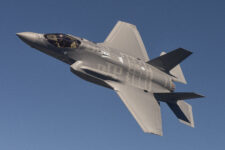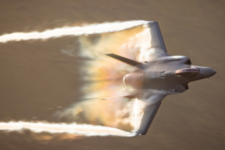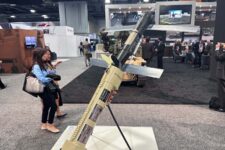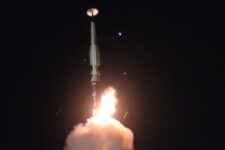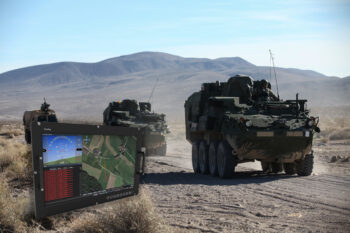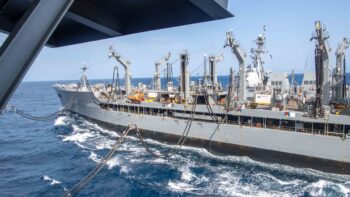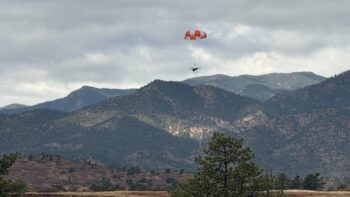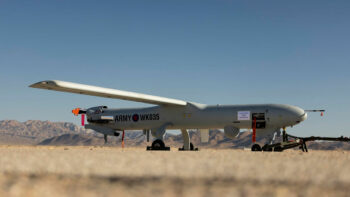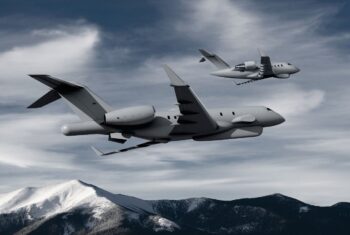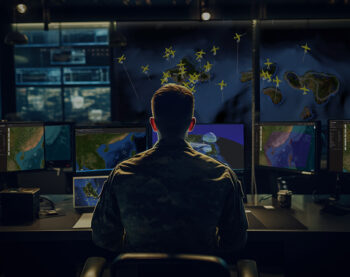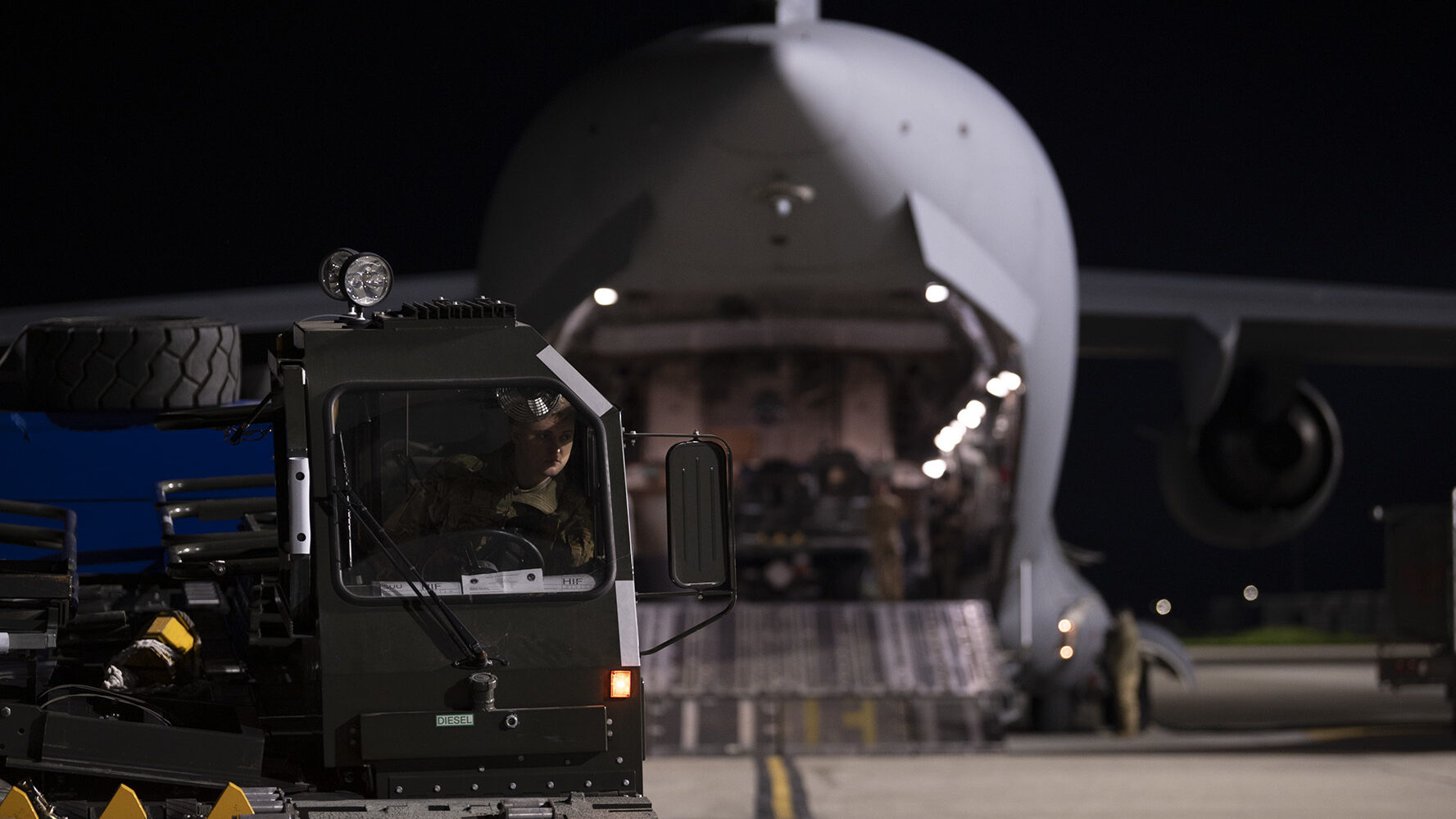
Senior Airman Jacob Rowan, 60th Aerial Port Squadron ramp operator, drives a K-loader toward a C-17 Globemaster III at Travis Air Force Base, California, Feb. 14, 2022. (US Air Force/Senior Airman Karla Parra)
WASHINGTON: In just a year, the US Air Force’s mobility fleet has had to shoulder two intense, arduous missions: the evacuation of 124,000 civilians from Afghanistan and the ongoing transport of US troops and weapons to Eastern Europe following Russia’s unprovoked war against Ukraine.
But even as young airmen work tirelessly to shuttle anti-tank and anti-air missiles to Romania so that they can be transferred to Ukrainian forces, or to fly C-17s to deploy thousands of US soldiers to reinforce NATO’s eastern front, Air Mobility Command head Mike Minihan told Breaking Defense that his eyes remain on China.
Asked during an exclusive interview in March whether he was concerned about the stress on the mobility air force, Minihan responded, “I am concerned, but I am normally concerned because there is always [that] tension.”
However, he added, “Let’s not underplay what’s happening. If we get this wrong in Europe, then your kids and grandkids could be affected by the outcome of this.”
The work that mobility forces are doing now in Eastern Europe is all being done to prevent Russian escalation that would trigger a war with NATO allies, he said. “We have to demonstrate a resolve as a country and as an alliance that prevents the worst-case scenario from happening, or nobody’s going to care how much [readiness] I preserved for the future.”
Besides, “[if] we handle this,” Minihan said, pointing to Russia on a map of the world, “we are deterring them,” he said, pointing to China.
Minihan — who has logged more than 3,400 hours in the C-130, KC-10 and C-32 — took the reins of Air Mobility Command in October. Prior to that, he spent eight years in the Asia-Pacific serving in a variety of roles, most recently as deputy commander of US Indo-Pacific Command from 2019 to 2021.
“That’s the only reason I was hired in this job,” Minihan joked about his INDOPACOM experience. “I’m convinced it’s not because they need a C-130 pilot at the helm of Air Mobility Command.”
If Minihan’s job is to get Air Mobility Command ready for a war with China, he’s got a massive problem to solve.
In a scenario where tensions with China have escalated into a full-blown war, the Air Force will have to figure out how to move its aerial refueling tankers and transport aircraft from the US west coast to the Indo-Pacific, with communications, space and cyber capabilities all becoming more degraded the closer those platforms get to China, he said.
Another obvious problem: Mobility planes are big, slow and have fewer defensive systems than fighters and bombers, making them easy targets for the combat aircraft and surface-to-air missiles that will become more prolific as US mobility forces move towards China.
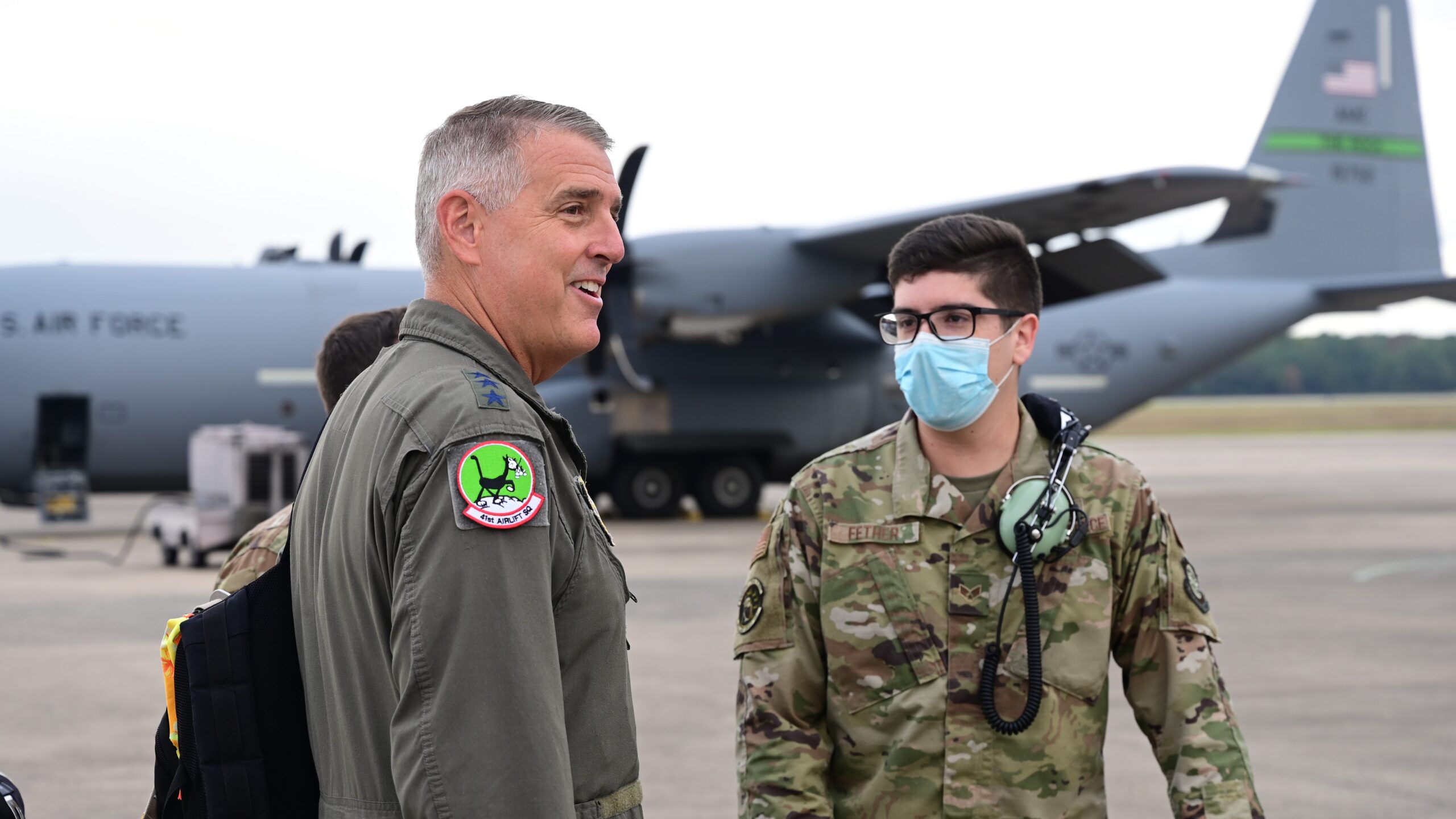
Lt. Gen. Michael Minihan speaks (l) with a group of Airmen prior to piloting a C-130J Super Hercules flight at Little Rock Air Force Base, Arkansas, Sept. 17, 2021.(U.S. Air Force/Jayden Ford)
In some respects, the problem has a “Back to the Future” vibe, with challenges that echo World War II — the need to traverse long distances, communication lines that will likely be contested due to electronic warfare and the new threat of cyber attacks, and degraded command and control that will make it more difficult for the commander to transmit his or her intent to operators.
“That’s something that we haven’t had to do in a long time. That’s what our grandparents did,” Minihan said. “If [China] can act in a manner that quickly gains a foothold on Taiwan, then it’s all in jeopardy.”
While describing the potential dilemmas, Minihan notes that China is not an insurmountable foe. “We’ve got to quit kind of looking at [China] as a 10-foot-tall problem set,” he said. “We will be doing everything to them that they’re doing to us.”
While Air Mobility Command is still in the early days of figuring out how to address the threats posed by China, Minihan has identified four areas of focus:
- Command and control: How can the Air Force ensure its mobility forces are connected to each other and to the joint force at large? And how can mobility forces execute the mission if communication lines are jammed or otherwise down?
- Navigation: How can crews carry out missions when China disrupts GPS or other critical position, navigation and timing systems?
- Enroute: If major airbases are under attack, how can air mobility forces operate from austere locations?
- Tempo: How can air mobility forces sustain operations and move at the speeds needed to be relevant, even as they suffer attrition or changes occur on the ground?
Once AMC establishes where there’s most risk, it can either develop new tactics or procedures to mitigate it, buy something off the shelf to fill the gap or establish a requirement for a future program, Minihan said, adding that this process has already started for gaps that have been identified.
For example, Air Mobility Command may end up making recommendations to invest in certain resilient, redundant, durable communications gear to solve certain C2 challenges, Minihan said.
However, in some cases, the most quick and effective solution might be a change in tactics, techniques and procedures, such as training airmen to rely on “mission type orders” where the commander communicates a goal for a mission but gives troops latitude to figure out how to execute it.
“Get it forward of Guam. Here’s your three places that it could possibly go. And now I don’t need any communication [until the mission is done],” he said, adding that the approach “puts an enormous amount of responsibility exactly where it should be — on the captains and the tech sergeants and the staff sergeants out there hacking the mission.”
The Air Force’s “agile combat employment” construct for distributing forces away from major airbases also holds promise for cargo planes and tankers. For example, training pilots how to land on highways of a partner country, refuel on the ground and then get back into the air could ensure that operations stay on track even if major airbases are under fire.
Romania signs LOA to secure entry to F-35 club
“This decision marks a significant milestone in Romania’s defense strategy and its commitment to maintaining a robust and advanced military force,” Lockheed Martin said in a statement.
